how to keep goats in a fence
Having a fence and ensuring it does its job are two different things with goats. Goats are notorious for escaping and if they do, they can get into trouble quickly. To help, I have tips on how to keep goats in a fence so they stay safe and only eat what you want them to.
Use these tips on how to raise dairy goats in a self-sustainable way, allowing them to graze and save money on feed bills.
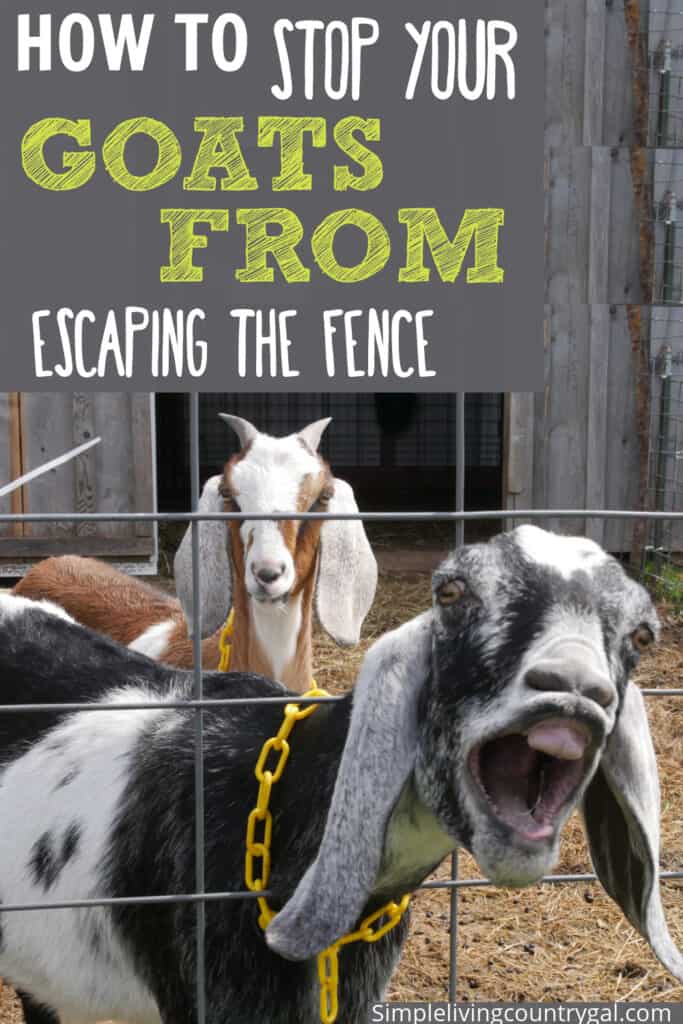
When we got our first couple of goats, we quickly learned how important it is to keep these animals securely contained. Goats can do damage in just a few minutes, so having a fence that does its job will help. Goats are also natural escape artists who can jump, climb, and wiggle their way out of an insecure fence. To keep your herd safe, I have three goat fence ideas that are durable and secure that you can consider for your own setup.
Why Do Goats Try to Escape?
One of the most common reasons for escape attempts is that goats are curious animals. If they hear a noise, get a whiff of a smell, or a glimpse of something new, it is enough to encourage them to find a way out. Having a barrier that does it’s job effectively will save you from having to chase goats or repair unintentional damage done by a mischievous herd.
Reasons why goats try to escape
- Boredom – You can help your goats keep from getting bored by giving them things to explore or structures to climb on. A DIY Goat Playground is a great distraction that will help to keep your herd inside.
- Not Enough Space – You want to be sure there is enough grazing room in a pasture. For every goat it is best to have 200-250 square feet.
- Grass is Greener – Be sure to have a variety of browse where your goats graze. Goats prefer to eat grasses such as Orchard grass or Timothy Hay, as well as legumes, brambles, shrubs, and trees. Get a full rundown of what to plant for goats in a pasture.
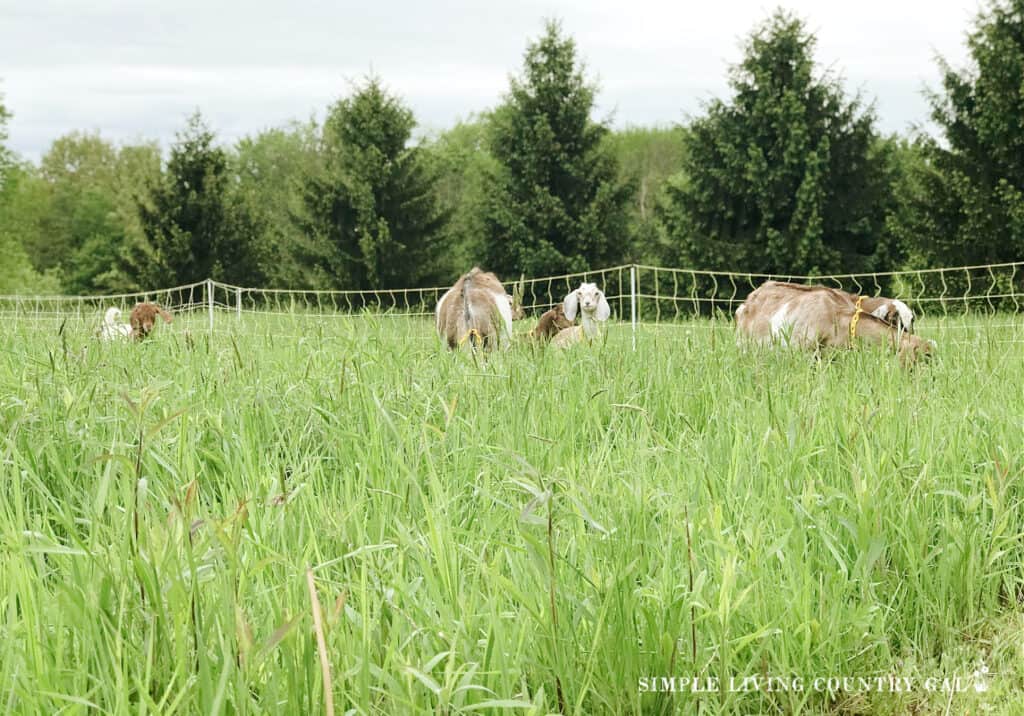
how to keep goats in a fence
Luckily there are a few things you can do to prevent your goats from trying to escape your fenced-in area. Let’s look at a few.
Choose the Right Fencing
When it comes to goat fencing, there are several options to choose from, including high tensile, chainlink, woven electric fence, and steel fence panels. Although electric fencing can be a good option for some goat breeds, it may not work for all animals or setups. This is true if you are just starting out, are on a tight budget, or have goats that are not well-trained with a history of jumping out. Chain link or steel fence panels are more durable and sturdier than electric fencing but can be cumbersome and challenging to install.
Have the Right Height
No matter what type of fencing you choose, you will want to make sure it is at least four feet high or higher. This will help to prevent jumping out. Another tip is to regularly inspect your fence so you can catch any gaps or holes before your herd does. One thing I learned over the years is that as soon as a goat finds a way out, they will never forget it. So, finding weaknesses in a fence before your goat does is the best way to keep everyone inside.
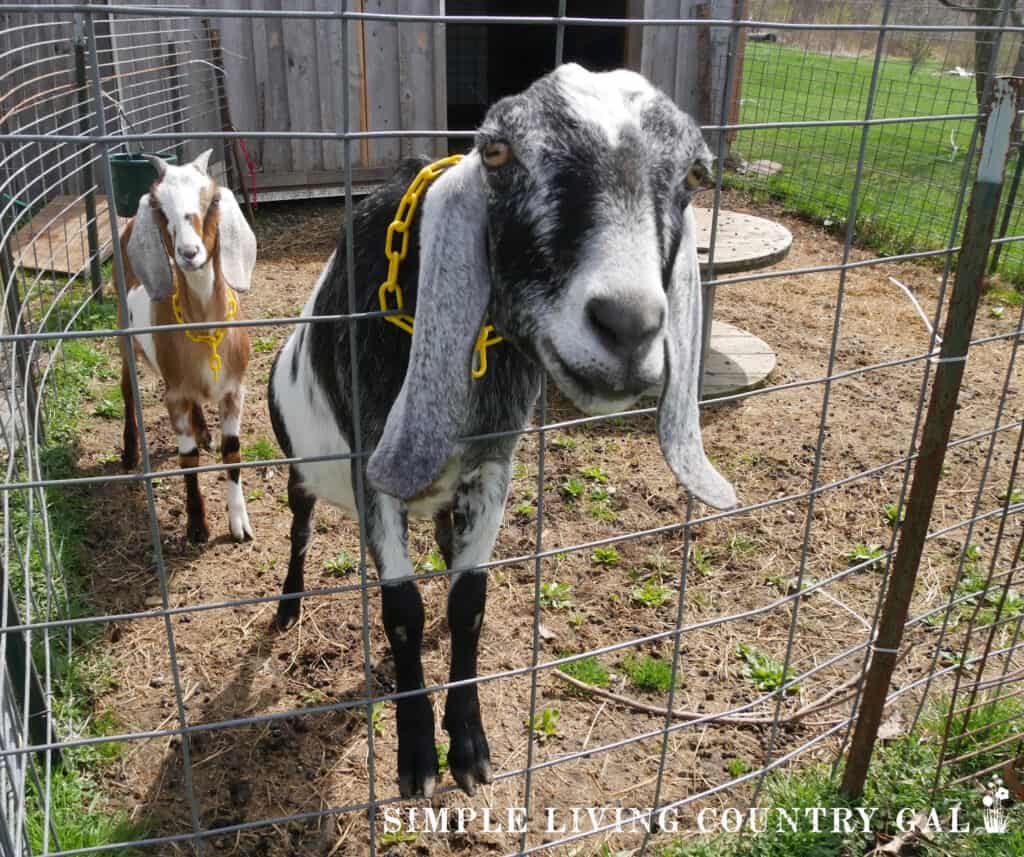
Train Your Goats to stay put
If you do choose to use electric fencing, it’s essential to take the time to train your goats to respect the electric charge. Goats are intelligent animals and can learn quickly, but they may need a little help to understand the new boundaries. If your goats have no experience with electricity, it is best to start small. You can do this by enclosing a small area with an electric fence netting and supervising your goats closely as they explore. I
The trick to effective training is to have at least one member of the herd get shocked. Goats tend to learn by example meaning if one goat touches the fence and gets a shock, the entire herd will likely avoid the fence in the future.
Now, don’t worry; the zaps are not very strong, just enough to shock your goat and cause them to retreat alerting the herd in the process.
Over time, you can expand the fenced area until you feel they are ready for your full pasture. I have learned over the years that my herd needs a refresher training come spring, especially after being off pasture for the winter. I like to do a small area with the full herd to ensure everyone understands the role our fence plays in their safety.
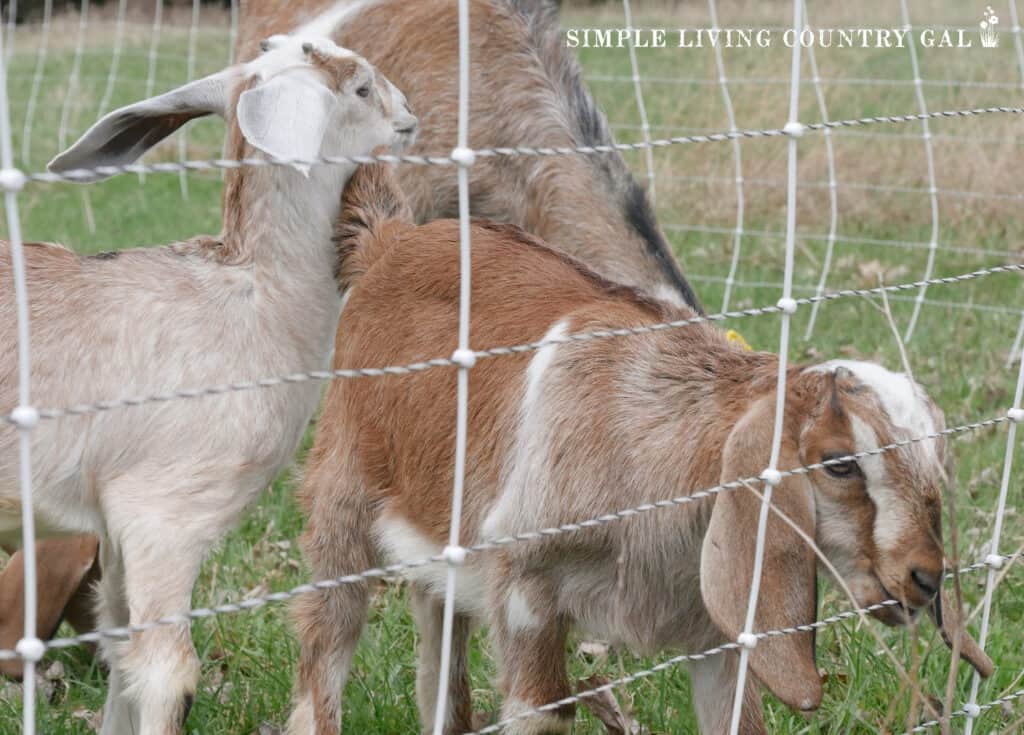
Provide Plenty of Space
Goats need plenty of room to roam and graze. A good rule of thumb is to provide at least 200-250 square feet of space per goat. If you want to practice rotational grazing, you may need even more space to allow for resting periods and regrowth of vegetation.
Besides having enough space for your herd, make sure your goats have access to shelter from the rain, fresh cool water, and shade to give them protection from the hot sun.
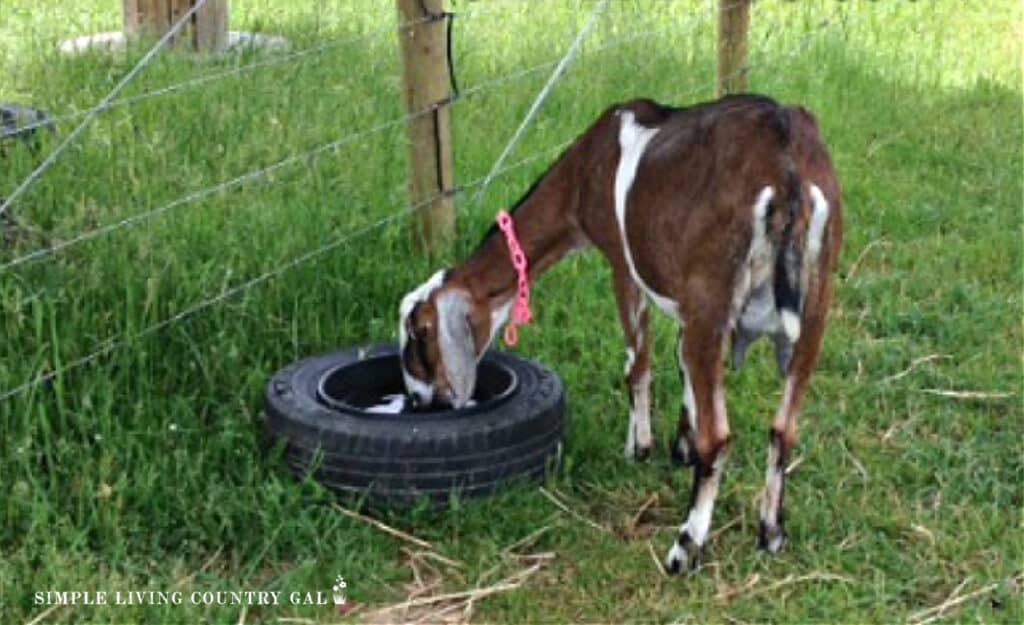
Keep Your Goats from Jumping Out
Besides choosing the right fence, you can take several steps to discourage your goats from jumping out. One tactic is to add a top rail to the fence. You can also add another section of woven steel fence, making it taller or more challenging for your goats to jump over.
Another option is to make sure your goats have plenty of mental and physical stimulation in their pasture area. Provide toys, such as logs, tires, wooden spools, or balls, and offer different types of grazing materials, such as hay, bushes, or trees, to keep your goats engaged and content.
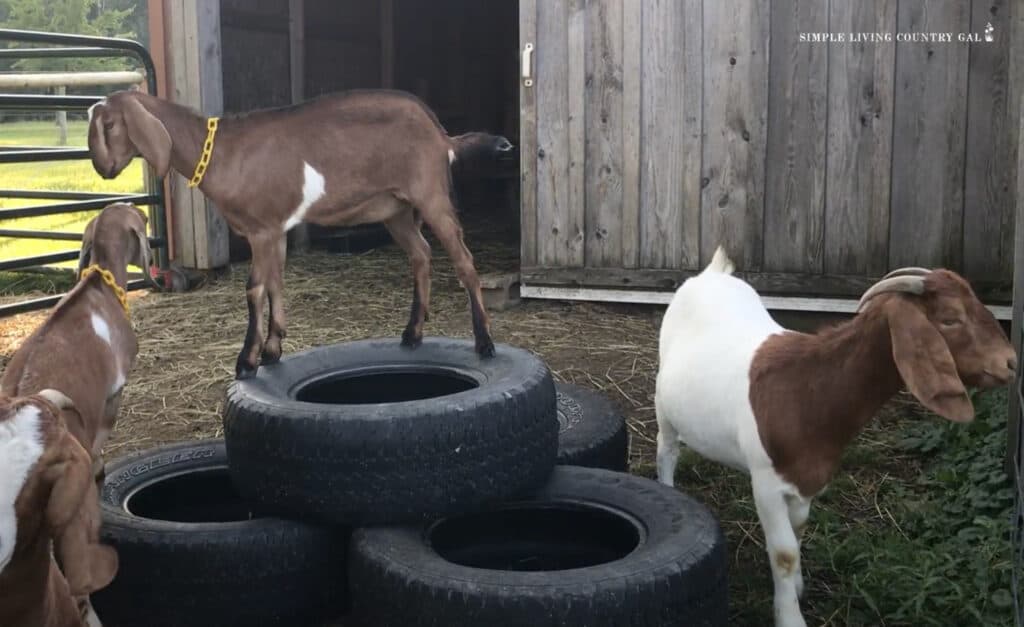
More Goat Resources:
GREAT RESOURCES FOR RAISING GOATS:
Starkline Premium Electric Sheep & Goat Netting Kit- AC Energizer (9/35/8) for Backyards, Homesteaders, and Livestock OwnersStarkline Electric Netting (42
TMEE Electric Fence Netting Goat Sheep Fencing Livestock Netting Fence with 14 Posts Double Spiked, Portable Mesh for Lambs, Deer, Hogs, Dogs in Backyards, Farms and Ranches, 35.5
Zareba ESP5M-Z Solar Powered Low Impedance Electric Fence Charger – 5 Mile Solar Powered Electric Fence Energizer, Contain Animals and Keep Out Predators,Black
40 Projects for Building Your Backyard Homestead: A Hands-on, Step-by-Step Sustainable-Living Guide (Creative Homeowner) Fences, Chicken Coops, Sheds, Gardening, and More for Becoming Self-Sufficient
Keeping goats safely contained can be a bit of a challenge, but with the right fencing, training, and grazing management, you can create a safe and secure environment for your animals. Remember to choose the right fence for your needs, train your goats to respect the boundaries, provide plenty of space for grazing and resting, and offer mental and physical stimulation to keep your goats happy and engaged. With these tips, you can enjoy the benefits of raising goats without worrying about their safety or escape.
